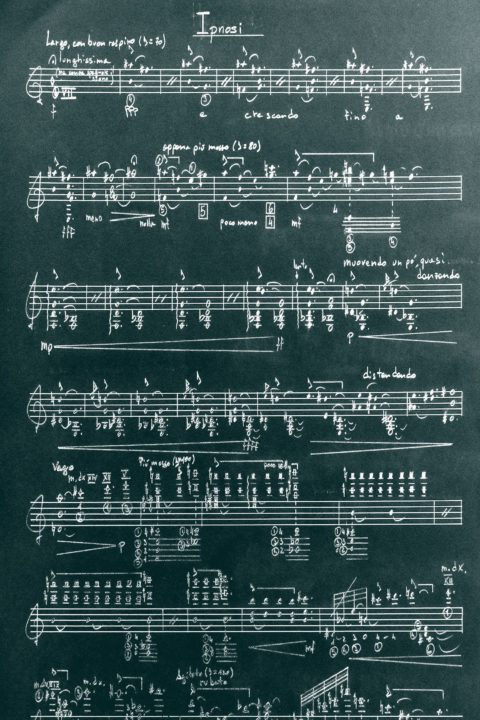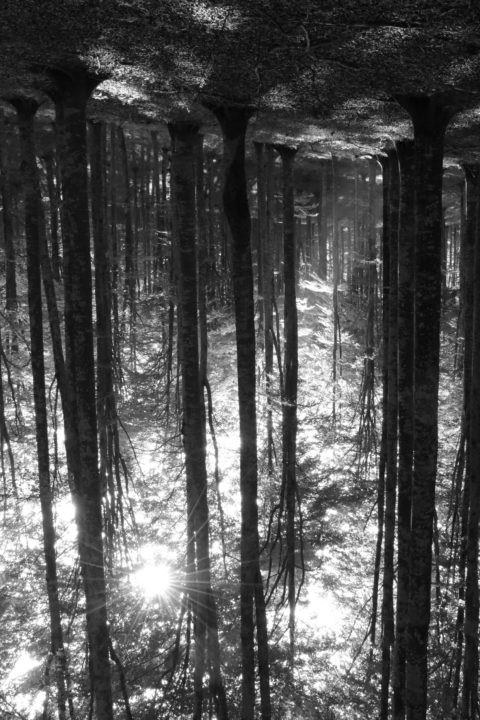HOW TO FIND THE NOTES

MUSIC FOR THE CONNOISSEURS
11 December 2005
ABOUT COMPOSITION
17 October 2013HOW TO FIND THE NOTES
At the moment in which one gets ready to create something, not only a painting, music or poetry but also any kind of art, it is necessary to accumulate enough energy so that the work is of a certain efficacy. One could compare this to claiming to reach a far off place without being sure of having enough fuel for the return journey. By doing this one runs the risk of arriving only half way and not completing the journey.
The act of creation and its development do not only depend on the capacity to act methodically, in other words on the ability to create a route to follow, but also on the possibility of having enough energy to be able to finish the journey. So it is necessary that one accumulates enough energy internally to derive a new idea and to bring it to completion. A bad measurement of these components leads to getting stuck and losing the possibility of reaching the destination.
In fact one has the certainty that the work of art will be completed if, in its first glance at the light of the world, one already has the intuition of what its conclusion will be.
There are moments then, in which the work appears to us in one go and in one instance in all its entirety, just as when we are in front of a vase and we see all its details in one glance. In this case nothing remains but to grab this work and translate it into a comprehensible language for those who did not have the possibility of partaking in its vision, in a different dimension from the tangible. If this work had really been in the physical world then anybody would have been able to see it and so there would not have been any need for the artist to make it evident.
At other times the artist makes himself a medium between the place in which the work was until that moment and the place in which the artist makes it evident to those who are unable to see it. Instead, other times, the elaboration of the work of art is slow and difficult, perhaps because it originates from far off places where it is difficult to penetrate (or where the artist that creates it has difficulty in getting there). So a lot of time passes before understanding how shadows could become well defined outlines and how reflections could turn into real images.
The difference between one artist and another is not only in the more or less adequate functionality of his method, (so much so that some affirm claim not to possess one but nevertheless create works of undoubted value), but in the capacity to set alight that which is grabbed from the supersensible world of ideas.
The ideas and the works of art generated from such are found in places similar to palaces; enormous, infinite buildings full of rooms which not all servants have the same access to. Some have more rights than others to spend time in certain rooms. Others do not have any at all. It is not very clear if these servants have the keys to these rooms or if it is the doors that open spontaneously when they pass by or which stay closed even after they have knocked. The fact remains that the result does not differ that much, only in the form in which it materialises and not in the substance in which it resolves. At the moment at which one enters these rooms one looks around and starts to describe what one sees, touches and breathes. On the basis of these elements, being one’s capability to grab the essence or the details of what one sees and one’s ability to know how to translate and describe it in a comprehensible language, then the work of art will be determined.
That is why all the works do not have the same value and meaning. Each one draws on different sources and each one is reported by different eyes.
In conclusion it is our job to try to refine our sight and sensibility so as to grab, in an ever more precise way, that which we have the occasion or the power to meet along our way.



